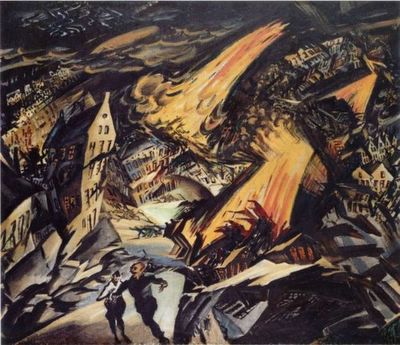Here's something that'll bring the roses to your pale cheeks. Apparently, the Air Force spent a million dollars on handheld chemical detectors for use in Iraq, despite knowing that they didn't work properly:
Air Force officials may have violated federal laws and military rules when they bought 100 commercial versions of the detectors and supplied them to commanders in the Middle East while knowing that the manufacturer's tests showed the devices did not work well in hot areas or under battle conditions, the Deseret Morning News reported.The manufacturer in question is BAE Systems Integrated Defense Solutions, and here's what it said about the conditions under which the sensor will work:
JCAD ChemSentry™ performs its mission in the most adverse environments users can encounter.There's a nice ambiguity in this phrasing; it reminds me of the Gumby cartoon where Gumby and his associates visit a lemonade stand that advertises "all you can drink for ten cents," and are denied a refill because one glass is "All you can drink for ten cents."
Ronda Foster of BAE was similarly ambiguous in this interview:
Q: Tell me about JCAD. Since it's now deployed, what kind of feedback are you getting?Fewer false alarms than what system? As I noted elsewhere:
A: The feedback we're getting is very positive. The most pleasing comments are that the system resists interferents better than others (resulting in fewer false alarms), that it works in the harsh conditions they expose it to, and that it's easy to use.
A Senate investigation heard in 1994 that each of the 14,000 chemical weapons alarms around the troops went off on average twice or three times a day during allied aerial bombardment of Iraq - a total of between one and two million alarms. All were said to have been false alarms.Assuming those official figures were accurate, the ChemSentry would only have to work once in a hundred attempts to have "fewer false alarms" than the 1991 system. The figures almost certainly weren't accurate, as it happens, but "fewer" is still a meaningless term without a specific comparative context.
These aren't the only examples of BAE's reticence about the ChemSentry. According to this article:
BAE already has sold several hundred units to the military. Although the company won't say so, some of those units are expected to be put to use in Iraq.Fair enough. My understanding is that the ChemSentry costs roughly $10,000 per unit; what, then, am I to make of this?
The U.S. military has ordered 270,000 chemical weapons detectors, CNET News.com reported Friday....The detectors, which are called Joint Chemical Agent Detector ChemSentry and made by BAE Systems, cost $2,000 each and can detect chemical agents including sarin and VX.That's almost certainly a typo; my guess is that $2,000 wouldn't even buy a carrying case for the ChemSentry. Indeed, the detectors sometimes cost considerably more than ten grand:
Fort Worth officials bought three units for $45,000 last month with grants from the Justice and Homeland Security departments. Also through a grant, Bedford officials purchased a unit.So now we're up to $15,000 a pop. Clearly, when cities buy faulty CW detection equipment, they should go for volume discounts, so as not to waste the taxpayers' money.
As you can see, the difficulties of the Voynich Manuscript are child's play next to the ChemSentry. But what I find perhaps most outrageous about all this is the original article's observation that the Air Force didn't wait for Dugway Proving Ground to test the device. What's the point of blighting the country with a literal plague-spot like Dugway, if it's not going to be allowed to test devices that are supposed to save people's lives?
Fun facts to know and tell: In addition to being (if memory serves) the world's largest global arms dealer and a sometime partner of the Carlyle Group, BAE Systems also invented George W. Bush's personal nemesis, the Segway.




